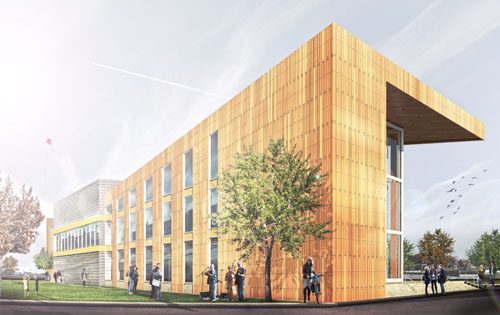‘A dollar and a dream,’ was the phrase I read in a brochure about the starting point for revitalizing neighborhoods through the Neighborhood Revitalization Tax Credit (NRTC) program, a unique economic development tool created by the State of New Jersey. While I agree there must be a starting point, its important to know that the idea for the NRTC program involved collaboration long before there were dollars.
Designed by the Housing and Community Development Network of New Jersey (HCDNNJ), the NRTC program was authorized by the Legislature in 2002 and is administered by the state’s Department of Community Affairs (DCA). This economic development tool was created to attract private investment in New Jersey’s distressed neighborhoods and to foster ongoing partnerships between private corporations and community-based development organizations.
The program encourages the private sector to invest in neighborhood revitalization projects by offering a 100 percent tax credit to participating businesses that contribute to participating nonprofits that have neighborhood revitalization plans approved by the state’s Department of Community Affairs (DCA). 
A total of $10 million per year is available in state tax credits to businesses that participate in the program, and any approved project may qualify for up to $1 million in tax credit investments per year. DCA manages an investment pool and disburses funds to the agency’s approved organizations. Participating nonprofit organizations must use at least 60 percent of the funds for activities related to housing and economic development. The remaining balance may then be used for complementary activities including small business assistance, physical improvements, and social services such as job training, childcare, and transportation.
In 2004, PNC was the first corporation to make a commitment to the NRTC Program, and while this was at the time when investments received a 50 percent tax credit, PNC decided to invest for several reasons:
1. It makes good business sense to invest in revitalizing neighborhoods where we do business.
2. The bank is always looking for ways to participate in economic development opportunities in our service areas and the NRTC is a great tool to leverage our investments.
3. It’s important that our communities and our customers trust us to “do the right thing” where we do business.
4. We receive a tax credit.
Several years later, over 25 corporations have invested more than $70 million in the NRTC program, and its become a powerful tool for leveraging critical resources. There is so much interest now that the program is over-subscribed annually. What’s creating this interest and excitement? Success. The program drives significant impact through equity and leveraged investments; in fact, a recent HCDNNJ report noted that for every dollar invested, the NRTC program has leveraged $7.30.
But the time has come to challenge ourselves to take NRTC to the next level. No doubt, the NRTC is a great government program, and many private corporations have answered the call and stepped up to the plate. While this public-private partnership has promoted economic growth in some underserved areas, the new challenge is one of leadership and public policy.
It’s thrilling, and heartening, to see that so many corporations having stepped up to the plate, supporting New Jersey’s neighborhoods and working strategically with community development organizations through NRTC. It is a great government program.
The time has come to challenge ourselves to take NRTC to the next level, bringing in more partners and expanding its reach to more areas—with more dollars. But to do this, the NRTC needs a public sector champion. It needs someone who will carry the proverbial torch for our communities and cultivate strong ties with the private sector. And right now, we don’t have one. This vacuum of leadership affects all of New Jersey, and in a vacuum, windows of opportunity eventually close.
If we had more partnerships aligned with more stakeholders, how many more dreams could be realized, rather than deferred?
(Photo credit: bianca polak, via flickr, CC BY-NC 2.0 & Rendering of Asbury JAMS facility courtesy of Interfaith Neighbors)

#113 Sep/Oct 2000
A Gem for New Jersey Neighborhood Revitalization
‘A dollar and a dream,’ was the phrase I read in a brochure about the starting point for revitalizing neighborhoods through the Neighborhood Revitalization Tax Credit (NRTC) program, a unique […]


Comments